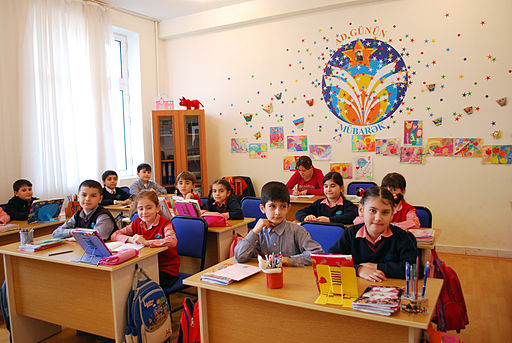Effective Classroom Assessment Strategies

This article will discuss effective assessments strategies used in the classroom. Due to No Child Left Behind initiatives, assessments are considered invaluable tools for determining curriculum, instruction, and student achievement. Educators view student performance on standardize testing as an accountability tool. Stiff penalties are associated with failure to raise student test scores. The following will discuss the negative and positive experiences associated with assessment.
Positive Assessment Experience
One of many positive experiences associated with assessment is within the writer’s sixth grade classroom. The challenge of raising reading, math, and science-standardized test scores were based on tough odds. Usually at the beginning of the school year, administrators attempt to balance the ratio of low, medium, and high learners. In addition, the classroom sizes are supposedly kept to twenty. However, this particular year, the sixth grade enrollment was slightly higher. Therefore, the classroom ratios of lows, mediums, and highs were unbalanced.
Many of the mediums were boarder line low performing students. Several sixth grade students had reading and math scores in the lower 10%. After discussions in grade level teams and meeting with reading and math specialist, a plan of intervention was developed to target reading and math weaknesses. Included in the plan of intervention were additional strategies to monitor student lesson mastery. Across the curriculum, teachers implemented daily open-ended questions, oral questions, projects, and lesson summaries.
Assessment Intervention Plan
Open Ended Questions
Open-ended questions are designed to help students implement critical thinking skills and develop test taking skills. Students learned how to express what was learned through writing. Open-ended questions can be catered in a variety of subject areas and topics. Teachers can utilize an overhead projector with a question for students to answer. The goal is to encourage learners to write at least a paragraph on a topic. For example, students can discuss the character traits of a main character or evaluate a characters action. Teachers can personalized the questions by having students search for similarities between a character and a friend or family member. Open-ended questions are effective writing activities for helping learners to move beyond recalling ideas.
Oral questions
Oral questions are asked by the teacher to assess student achievement. Teachers may post questions around the room to help students reflect on a topic before, during, and after instruction. Across the curriculum, oral questions can be implemented and students can design questions to quiz learners. Teachers can encourage learners to create questions to solve problems or draw conclusions. The ultimate purpose is to share knowledge and evaluate learning. .
Projects
Projects can be independent or collaborative lesson activities. Examples of projects are collages, art, poems, or technology based activities. Technology activities strengthen learner ability to retrieve and summarize data for implementation. Students can make classroom presentations such as, creating a social studies or science fair. Parents can be included in lesson activities by providing historical interviews regarding family or community achievements. Projects can be used to assess learning across the curriculum, which can stimulate a student’s love of learning.
Lesson Summaries
Lesson summaries can be utilized to encourage learners to reflect on a lesson or activity. Students can keep a copy of each lesson summary to study for upcoming tests. Lesson summaries can be collected to create grade level portfolios or used on bulletin boards. In addition, lesson summaries can include pictures of a favorite character or topic. Therefore, learners have an illustration, which compliments the summary. Educators can assess learner knowledge and adjust future lessons based on student summaries.
The results of standardized testing revealed that the majority of low learners and mediums demonstrated an increase in reading and math ranging 10% to 20%. There were five highs, which scored above 70% and two, which scored over 85%. The majority of sixth graders were promoted to seventh grade! A few students did need to attend summer school, because of low attendance and the need to bring up test scores by 5%. However, this was considered a good outcome when reflecting upon the obstacles.
Differentiated Instruction Assessment Strategies
Should Standardized Tests Be The Only Resource For Evaluating Student Achievement?
Negative Assessment Experience
One negative experience associated with assessment, which can profoundly affect an educational staff is the constant changes to meet NCLB mandates. When leaving school meetings, teachers were overwhelmed with new instructional and assessment initiatives. The daunting expectations or the school district goal is that every school attains 100% on standardized test. Any school that fell short of this goal would face a decrease in funding or “complete state take over …(Barth, 2006, p.1)”.
Administrators seemed confused regarding how to meet the No Child Left Behind mandates. In a personal experience, from one week to another, new academic changes were implemented. Colleagues would lament, “Here we go again”. Teachers experienced pressure to daily and weekly provide evidence of standard based learning. Teachers were required to post learning objectives, “I can statements”, change bulletin boards weekly with student “rich print” work, teach testing skills, and create student portfolios. Rich print student work is authentic learning assignments that are project based rather than copies made as busy work. The writer’s school day ended around 6:00 p.m, because of teaching after school. At home, lessons were prepared and the next day teachers briefly collaborated within grade level teams. Top priority was given to providing effective instruction, meeting changing school initiatives, but endeavoring to decipher administrative expectations was challenging. Admittedly at times, several teachers were emotionally and physically drained.
Assessments have served an important purpose in education. Teachers rely upon various assessment resources to determine if “any specific learning experiences contribute in a major way to attainment of a particular standard or how many students attained that level of performance?” (Pattison & Berks, 2000, p. 11) Although standardized testing has created a climate of “teaching to the test”. For many teachers, the desire to find a balance of providing effective instruction and meeting the “Adequate Yearly Progress” is of foremost concern.
In addition, assessments have proven invaluable tools for determining student areas of weaknesses and strengths. Many educators consider standardized testing as one form of assessment. Other assessment tools are open ended questions, essays, oral questions, projects, and summaries. “The ongoing goal is to improve the curriculum and raise student achievement (Pattison & Berks, 2000, p. 11)”. In addition, the writer strongly feels that standardized testing results are misused tools. Therefore, all assessments resources should be considered to determine student mastery.
In today’s schools, drastic changes need to be made regarding how assessments are used to measure student mastery. Standardized testing should not determine if a student is promoted to the next grade level: Various assessment tools should be used such as, classroom portfolios, weekly assessment test, observations, report cards, etc. These tools can be used to measure a students academic, social, and developmental potential.
In conclusion, NCLB mandates have brought positive and negative experiences. Standardized testing should be used as a tool to determine student achievement rather than the only evidence. A teacher’s ultimate goal is to raise student achievement and meet NCLB mandates. Finding a balance is crucial and a challenge.
References
Barth, P. (2006, March 23). A guide to standards-based reform. Retrieved from The Center for Public Education:
http://www.centerforpubliceducation.org/site/pp.aspx?c=KjJXJ5MPIwE&b=1505663&prin
Pattison, C., & Berkas, N. (2000). North Central Regional Educational Laboratory. Retrieved from Critical Issue: Integrating Standards into the Curriculum:
http://www.ncrel.org/sdrs/areas/issues/content/currclum/cu300.htm









